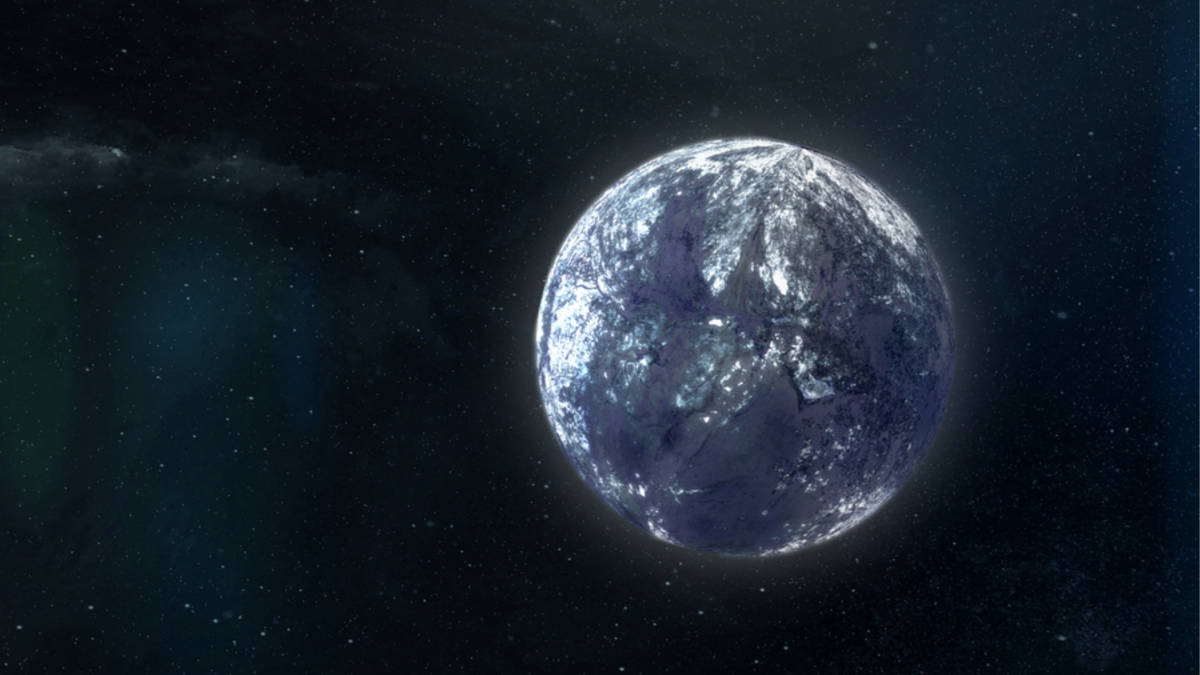Welcome to DU!
The truly grassroots left-of-center political community where regular people, not algorithms, drive the discussions and set the standards.
Join the community:
Create a free account
Support DU (and get rid of ads!):
Become a Star Member
Latest Breaking News
Editorials & Other Articles
General Discussion
The DU Lounge
All Forums
Issue Forums
Culture Forums
Alliance Forums
Region Forums
Support Forums
Help & Search
Science
Related: About this forum400 Earth-size rogue planets could be wandering the Milky Way
By Robert Lea published 1 day ago
NASA's forthcoming Nancy Grace Roman Telescope will hunt for "cosmic orphans," starless planets that might even outnumber their orbiting counterparts in our galaxy.

An illustration of an ice covered rogue planet (Image credit: NASA’s Goddard Space Flight Center)
New predictions suggest an upcoming NASA space telescope could spot over 400 Earth-mass worlds hidden throughout the Milky Way that have "gone rogue" and therefore wander our galaxy alone.
Such orphan worlds are thought to start their lives in a planetary system, akin to the solar system, but get kicked at some point out by a mechanism thus far unknown. Despite the familiar picture of planets neatly orbiting a star, new research suggests such orphaned starless worlds may outnumber stars in the Milky Way by 20 to 1. This implies untethered worlds in our galaxy are around six times more common than planets orbiting parent stars.
"We estimate that our galaxy is home to 20 times more rogue planets than stars – trillions of worlds wandering alone," research author and NASA senior scientist, David Bennett, said in a statement. "This is the first measurement of the number of rogue planets in the galaxy that is sensitive to planets less massive than Earth."
Typically, planets outside our solar system, known as exoplanets, are detected by the effects they have on their host stars. For instance, an exoplanet can cause Earth-based viewers to witness a drop in its star's light as the planet's trajectory takes it between the star and our planet. Or, an exoplanet can affect such light through a wobble it creates in the orbit of its host star while gravitationally tugging on the glowing body. But the fact that rogue planets are so far away from host stars makes them tough to spot.
More:
https://www.space.com/400-earth-size-rogue-planets-could-be-wandering-the-milky-way
InfoView thread info, including edit history
TrashPut this thread in your Trash Can (My DU » Trash Can)
BookmarkAdd this thread to your Bookmarks (My DU » Bookmarks)
6 replies, 1399 views
ShareGet links to this post and/or share on social media
AlertAlert this post for a rule violation
PowersThere are no powers you can use on this post
EditCannot edit other people's posts
ReplyReply to this post
EditCannot edit other people's posts
Rec (3)
ReplyReply to this post
6 replies
 = new reply since forum marked as read
Highlight:
NoneDon't highlight anything
5 newestHighlight 5 most recent replies
= new reply since forum marked as read
Highlight:
NoneDon't highlight anything
5 newestHighlight 5 most recent replies
400 Earth-size rogue planets could be wandering the Milky Way (Original Post)
Judi Lynn
Jul 2023
OP
It says rogue which means they are all alone and forgotten. Many other stars have millions.
GreenWave
Jul 2023
#3
NewDayOranges
(727 posts)1. ONLY 400? In the whole GALAXY???
Duppers
(28,246 posts)2. That was my 1st thought too.
Will ask dh, a retired NASA physicist, his thoughts.
GreenWave
(9,183 posts)3. It says rogue which means they are all alone and forgotten. Many other stars have millions.
So rejoice.
Martin68
(24,611 posts)4. There used to be free app long ago where you could create a planetary system with a star and
planets revolving it. You'd input the planet size and distance from their star and put the system in motion. Most were unstable, eventually leading to a collision between planets, a planet crashing into the star, or a planet being slung out of orbit into the cosmos. I think it was for the Apple II, but I'm not sure.
Angleae
(4,640 posts)5. Something like this?
Martin68
(24,611 posts)6. Exactly, Except that it was an app. It was very interesting to design different solar systems and
observe the ensuing chaos. Sometimes they were quite stable and sometimes they blew up in seconds. The internet didn't have stuff like that at the time.